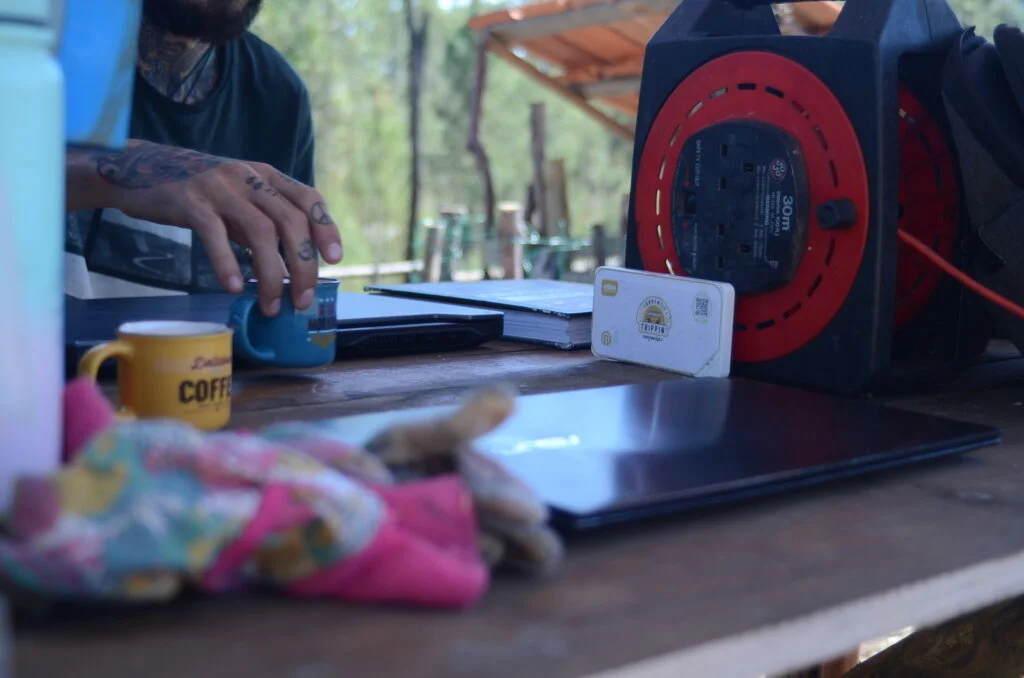Mobile Router Guide: Setting Up and Configuring

Key Takeaways
- Mobile routers offer a convenient solution for portable Wi-Fi connectivity, ideal for travelers, remote workers, and anyone needing internet access on the go.
- This guide empowers you to set up and configure your mobile router with ease, ensuring a smooth and secure online experience.
- Learn essential tips for optimizing performance, maximizing battery life, and troubleshooting common mobile router issues.
Unveiling the Mobile Router: Your Pocket-Sized Wi-Fi Companion
A mobile router, also known as a portable Wi-Fi hotspot, is a compact device that acts as a personal Wi-Fi network. It functions by receiving a cellular data signal (similar to your smartphone) and broadcasting a Wi-Fi signal that multiple devices (laptops, tablets, smartphones) can connect to. This makes it an indispensable tool for anyone who needs reliable internet access mobile router guide while traveling, working remotely, or venturing beyond the reach of traditional Wi-Fi networks.
Feeling lost in the world of mobile routers? ConnectPls can help you choose the perfect device for your needs!
Getting Started: Setting Up Your Mobile Router

Before embarking on your mobile connectivity adventure, follow these steps to set up your mobile router:
- Power Up: Most mobile routers come pre-charged, but it’s wise to fully charge it before your trip.
- Insert the SIM Card: Locate the SIM card slot on your mobile router and carefully insert your compatible SIM card (purchased separately from a cellular service provider). Ensure the SIM card is properly activated and has a data plan suitable for your needs. In ConnectPls, you don’t need an additional SIM Card.
- Power On and Connect: Turn on your mobile router according to the manufacturer’s instructions. Locate the Wi-Fi network name (SSID) and password typically printed on a sticker on the router itself. Connect your devices (laptop, smartphone, etc.) to this Wi-Fi network using the provided password.
Configuring Your Mobile Router for Optimal Performance
Once connected, you can access your mobile router’s settings to personalize your experience:
- Web Interface: Open a web browser on any device connected to your mobile router’s Wi-Fi network. In the address bar, type the IP address provided in the user manual (typically 192.168.1.1 or 10.0.0.1). You’ll be prompted to enter a username and password (also found in the manual) to access the router’s web interface.
Feeling overwhelmed by configuration options? ConnectPls can help you optimize your mobile router settings for a seamless online experience!
This web interface allows you to:
- Change the Wi-Fi Name (SSID) and Password: Personalize your Wi-Fi network name and password for added security and easy identification. In ConnectPls, we provide you unique usernames and passwords and don’t let you change them for security issues.
- Data Usage Monitoring: Track your mobile data usage to avoid exceeding data plan limits and incurring extra charges. In ConnectPls you don’t need to monitor your usage because we provide unlimited data.
- Network Management: Control which devices can access your mobile router’s Wi-Fi network and configure security settings like firewalls for added protection. In ConnectPls, you can connect up to 10 devices.
- Firmware Updates: Ensure your mobile router is running the latest firmware for optimal performance and security features.
Power Up Your Knowledge: Essential Mobile Router Tips and Tricks

Now that you’re connected, here are some valuable tips to maximize your mobile router experience:
- Optimizing Performance: For stronger Wi-Fi signals, position your mobile router in a central location away from walls and obstructions. Additionally, limit the number of devices connected to your mobile router to avoid bandwidth congestion.
- Maximizing Battery Life: Several factors can impact battery life, such as signal strength, number of connected devices, and usage patterns. Conserve battery life by adjusting screen brightness on connected devices, closing unnecessary background applications, and disabling Wi-Fi when not in use. Consider investing in a portable power bank for extended use.
- Security Matters: Change the default Wi-Fi password to a strong, unique combination of letters, numbers, and symbols. Enable WPA2 encryption for enhanced security and prevent unauthorized access to your network.
Troubleshooting Common Mobile Router Issues

Even with the best preparation, occasional glitches can occur. Here’s how to tackle common mobile router guide issues:
- No Wi-Fi Signal: Double-check that your mobile router is powered on and the SIM card is inserted correctly. Ensure you’re within the cellular network coverage area. Restart your mobile router and the connected device.
- Slow Internet Speeds: Several factors can contribute to slow internet speeds. Move closer to a cell tower for a stronger signal. Reduce the number of connected devices or try disconnecting and reconnecting your devices. Check with your cellular service provider to ensure there are no network outages in your area.
- Unable to Connect to the Web Interface: Verify you’re connected to your mobile router’s Wi-Fi network. Ensure you’re typing the correct IP address, username, and password in the web browser. Try a different web browser or device to access the interface.
Struggling to troubleshoot your mobile router? ConnectPls offers expert support to help you get back online quickly!
Expanding Your Horizons: Mobile Router Applications for Travelers and Nomads

Mobile routers empower remote workers, travelers, and adventurers to stay connected and productive in various situations:
- Remote Work Freedom: Break free from the confines of a traditional office! Mobile routers enable you to work remotely from anywhere with cellular coverage, offering flexibility and increased productivity.
- Travel Connectivity: Stay connected and share your travel experiences seamlessly. Upload photos, access social media, and navigate with ease using your mobile router’s Wi-Fi network.
- Staying Connected on the Road: Whether on a road trip, camping adventure, or exploring off-the-beaten-path destinations, a mobile router ensures you can stay connected with loved ones back home or access essential online services.
The Final Signal: Conclusion

Mobile routers are more than just pocket-sized Wi-Fi hotspots; they’re gateways to a world of seamless online experiences. This comprehensive guide has empowered you to navigate the mobile router landscape, from setup and configuration to optimization and troubleshooting. Now, it’s time to unlock the potential of your mobile router and transform the way you connect wherever life takes you.
Imagine working remotely from a scenic beach paradise, or staying connected with loved ones while exploring hidden corners of the globe. With your mobile router as your trusty companion, these scenarios become your reality. ConnectPls, your one-stop shop for all things mobile connectivity, can further enhance your journey.
Here’s how ConnectPls empowers you:
- Expert Advice: Feeling overwhelmed by mobile router options? Our knowledgeable team can help you choose the perfect device that aligns with your needs and budget. No more deciphering technical jargon – we’ll guide you through every step.
- Personalized Setup and Configuration: Don’t waste precious travel time wrestling with settings. ConnectPls offers personalized setup and configuration services, ensuring your mobile router is optimized for a smooth and secure online experience.
- Ongoing Support: The journey doesn’t end at setup. ConnectPls provides ongoing technical support, so you can rest assured that help is just a click away if you encounter any challenges.
So, pack your bags, fuel your wanderlust, and let ConnectPls be your partner in mobile connectivity. Embrace the freedom of a world without Wi-Fi limitations. Explore, work remotely, and stay connected – the adventure awaits!
Frequently Asked Questions (FAQ) About Mobile Routers
1. What are the different types of mobile routers?
Mobile routers come in various shapes and sizes, catering to different needs and budgets. Here’s a quick breakdown:
- MiFi Routers: Compact and lightweight, ideal for basic internet access on the go. Battery life may be shorter compared to larger models.
- Portable Routers: Offer a balance between size and functionality, often featuring larger batteries and stronger antennas for better signal reception.
- Vehicle Routers: Designed for in-vehicle use, providing Wi-Fi connectivity for passengers on road trips or long journeys.
2. How much data do I need for my mobile router?
Data usage depends on your individual needs. Here’s a general guideline:
- Light use (web browsing, email): 1-2 GB per day
- Moderate use (streaming music, social media): 2-5 GB per day
- Heavy use (video streaming, downloading large files): 5 GB or more per day
Consider purchasing a mobile router data plan that aligns with your anticipated usage patterns. Many providers offer flexible data plans or pay-as-you-go options.
3. Can I use my mobile phone’s hotspot feature instead of a mobile router?
Yes, your smartphone can act as a mobile hotspot, but there are some drawbacks:
- Battery Drain: Using your phone as a hotspot can significantly drain its battery life.
- Data Usage Limits: Your phone’s data plan might have limitations on hotspot usage, leading to additional charges.
- Limited Range and Performance: Mobile phone hotspots may have a shorter Wi-Fi range and potentially weaker signal strength compared to dedicated mobile routers.
4. Is it safe to use a mobile router on public Wi-Fi?
Public Wi-Fi networks can be unsecured, making them vulnerable to hacking. While using a mobile router on public Wi-Fi doesn’t inherently make it safer, it does create a private network for your connected devices, adding a layer of security. However, it’s still recommended to exercise caution when using any Wi-Fi network, public or private. Avoid accessing sensitive information like bank accounts or credit cards on unsecured networks.
5. Where can I buy a mobile router?
Mobile routers can be purchased from various retailers, including electronics stores, online marketplaces, and directly from cellular service providers. Consider factors like features, price, and data plan compatibility when making your choice.
ConnectPls can assist you in choosing the perfect mobile router for your needs! (Another Hidden CTA)



